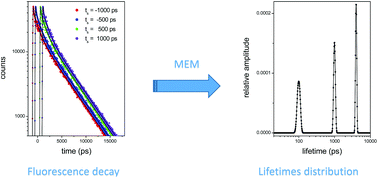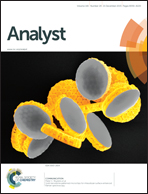Improved maximum entropy method for the analysis of fluorescence spectroscopy data: evaluating zero-time shift and assessing its effect on the determination of fluorescence lifetimes
Abstract
A new algorithm based on the Maximum Entropy Method (MEM) is proposed for recovering both the lifetime distribution and the zero-time shift from time-resolved fluorescence decay intensities. The developed algorithm allows the analysis of complex time decays through an iterative scheme based on entropy maximization and the Brent method to determine the minimum of the reduced chi-squared value as a function of the zero-time shift. The accuracy of this algorithm has been assessed through comparisons with simulated fluorescence decays both of multi-exponential and broad lifetime distributions for different values of the zero-time shift. The method is capable of recovering the zero-time shift with an accuracy greater than 0.2% over a time range of 2000 ps. The center and the width of the lifetime distributions are retrieved with relative discrepancies that are lower than 0.1% and 1% for the multi-exponential and continuous lifetime distributions, respectively. The MEM algorithm is experimentally validated by applying the method to fluorescence measurements of the time decays of the flavin adenine dinucleotide (FAD).



 Please wait while we load your content...
Please wait while we load your content...